Why should I buy a reusable hiking water bottle? Most serious hikers own at least one reusable bottle. There are three major reasons to buy one:
- They’re better for the environment. Single-use plastic bottles often find their way into rivers, oceans, and other natural environments. And even if they are recycled (which they’re usually not), the process of recycling uses precious energy. But reusable water bottles are refillable
- You’ll save money. If you aren’t buying single-use plastic bottles over and over again, you could save lots of cash
- They are rugged, durable, and reliable
- Reusable bottles are also very versatile – you can use them for hiking and trekking, but you can also use them day-to-day and as a gym bottle or sports bottle. And for many different drinks
In this article, we take you through all the different options that the best hiking water bottles can offer, from mouth size and materials all the way through to purification systems. We’ve also compiled a list of some of the best reusable water bottles on the market, along with a pros and cons list of each. Whether you’re looking for your first-ever reusable water bottle or an upgrade on what you’ve already got, we have you covered.
Hiking Water Bottle Reviews
Now that you know the ins and outs of reusable water bottles, let’s take a look at our top ten picks.
Here they are, in no particular order:
Hydro Flask Wide Mouth 32 oz
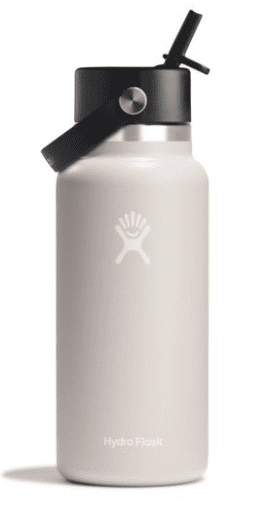
- Durable
- Insulated
- You can use different lids
- Non-slippery
- Relatively lightweight – so this is a good option if pack weight is a concern
- A little pricey compared to some other bottles
You might be asking yourself, “Why are Hydro Flasks so expensive?” One closer look at the Hydro Flask Wide mouth bottle will give you all the answers you need.
Hydro Flask Wide Mouth bottle is insulated and relatively lightweight, compared to other insulated bottles. The technology eliminates condensation, which means that the bottle doesn’t get slippery, or dampen other things in your backpack.
Hydro Flask Wide Mouth bottle comes with a screw lid that has a handle, but Hydro Flask offers alternative lids if you’d rather use something else. It’s made from stainless steel and has a wide mouth. A very affordable brand might be Simple Modern.
Klean Kanteen Insulated Classic 32 oz
- Affordable
- Durable
- Insulated
- Can get a little slippery due to condensation
Another insulated option, this is slightly more affordable than the Hydro Flask bottle above. The Klean Kanteen Classic is one of those insulated water bottles that have a screw cap with a loop, allowing users to attach them to their belts and backpacks with a carabiner if they wish.
Klean Kanteen Insulated Classic sports a standard mouth opening that is a bit on the narrow side, which makes it easy to drink from and fill, but a little more difficult to clean. It’s very well insulated and performs equally to any other double-wall insulated model. Again, it’s crafted from stainless steel – this Klean Kanteen model is one of the company’s best water bottles in terms of durability.
CamelBak Chute Vacuum 20oz
- Good functional cap
- Easy to fill
- Easy to drink from
- Crafted from slip-free material
- The lowest-volume entry on this list so far
- Not dishwasher-safe
Again, this one offers vacuum insulation and is made from stainless steel. CamelBack Chute has a nice lid that secures over the protruding mouth opening. The lid can be attached to the handle, so it doesn’t flap around while you’re drinking.
The surface of the CamelBak Chute Vacuum bottle is covered with an anti-slip grip to combat wetness and sweat. The bottle also has a wide opening for filling and cleaning – and you could also drink from this opening if you wish. Finally, you can easily attach the CamelBak Chute to your bag or belt via a carabiner. Check out our comparison of CamelBak and Hydro Flask as well if you are interested in this bottle.
Fifty/Fifty Wide Mouth
Pros & Cons- Durable
- Affordable
- Easy to carry
- Doesn’t leak
- The 18oz size option might be too small for long hikes
This comes in two size options: 18oz and 40oz. It has a convenient carry cap designed for three fingers, so it’s comfortable to carry. It’s durable and doesn’t scratch easily and the screw lid is good for preventing leaks.
It’s made from stainless steel, is well insulated, and has a wide mouth.
S’ip by S’well 16 oz
- Attractive designs, with lots of choices
- Protects against spills
- Affordable
- The good aesthetic choice for younger hikers (and adults who like nice quirky designs!)
- Smaller than some hikers might like
- It rusts quite quickly, which is unusual for bottles of this type
The designs on this one are really unique and attractive, which you’ll like a lot if you’re interested in aesthetics.
This one is made of stainless steel, it has a special leak-free lid and it’s effectively insulated. It has a narrow mouth with a flip lid, but this lid can sometimes get in the way a little while drinking. The top unscrews to allow for refilling – or for taking bigger gulps.
Because of its size and style, this could be a good option for younger hikers!
YETI Rambler 36 oz
- Very durable, so you can take it on the harshest of hikes – or give it to the clumsiest of hikers
- Won’t leak
- One of the bigger options on this list
- Doesn’t insulate as effectively as similar models
- Much pricier than some others on this list
Again, this one is insulated and built with stainless steel.
It’s 36oz, making it a bigger bottle than most others on this list. It has quite a large mouth, and the cap is good for clipping onto backpacks and belts. The cap is leakproof, and the durable outer coat is really built to defend against scratches and scrapes.
If you want a seriously durable model, this is a great option.
Drawing parallels in the Stanley vs Yeti discussion, Stanley too offers bottles that are renowned for their durability and design. While the described bottle boasts of its size and ruggedness, Stanley’s equivalent often comes with a legacy of outdoor resilience.
Thermo Flask 40 oz
- Great price point
- Easy to fill and drink from – with separate openings for each function
- Good carry handle
- Easy to open and wash
- Big, which is great for long hikes
- Leaks more often than other models on this list
- Sometimes can get slippery because of condensation
Made from stainless steel. For its size, this is a very affordable option.
The bottle has a very good grip, making it great for sweaty walks, and it’s very durable. The drinking spout is narrow, with a lid to cover it. But the bottle can also open into a bigger mouth for refilling.
The main lid is made from grippy silicone, so it’s easy to open, even with wet hands. It has a convenient carry handle.
LifeStraw Go Water Filter
- It has a built-in filter, which is fantastic for hiking in conditions where there won’t necessarily be easy access to drinking water
- The filter can clean up to 4000 liters of water.
- Durable for a plastic bottle
- It’s easy to refill
- Lightweight
- It occasionally leaks
- Not insulated like most other bottles on this list
The first entry on this list with an in-built water filter, this model has a filtration straw inside the bottle.
It removes 99.9999% of waterborne bacteria along with 99.9% of waterborne protozoan parasites. It’s important to be aware that this removes bacteria, but it won’t remove viruses. But that’s the same for all other filter bottles (Read my reviews of the best backpacking water filters).
The filter doesn’t leave much of a chlorinated taste behind. This one is 23oz, it’s leakproof and is made of strong BPA plastic. It’s easy to refill and drink from as it’s a wide mouth bottle with a straw in the lid. You drink from a small pop-up mouthpiece.
Sawyer Products 34 oz Filter
- The filter, according to the manufacturer, can last up to 400,000 liters.
- Good price point
- An excellent option for when you can’t guarantee that you’ll have drinking water
- Easy to refill
- Lightweight
- Not particularly durable
- Harder to clean than most other bottles on this list
Our second entry with a built-in filter, this one again has a straw for drinking through.
This straw offers excellent filtration – it removes 99.99999% of all waterborne bacteria and 99.9999% of all waterborne protozoan parasites. Again, it’s important to note that this bottle doesn’t eliminate viruses.
The bottle comes with two replacement straws and the water flows quickly out of the straw for speedy hydration. The bottle is crafted from plastic. It’s a little awkward to clean, as you need to use a cleaning plunger, but it’s not too difficult.
Takeya Originals Insulated 40 oz
Pros:
- Very durable
- Insulated
- Doesn’t sweat
- Good price point
- Sometimes sweats a little
- Prone to rust
Our final entry on this list is another well-insulated stainless steel bottle. It offers great insulation and it looks attractive.
The leak-proof spout is great for quick drinking, and the lid snaps into place, so it doesn’t hit you while you sip. The bottle has a wide loop handle to make carrying easy, and refilling and cleaning are quick and easy with the bottle’s wide mouth.
The bottle is coated with powder for great durability. Read the review of Takeya and Hydro Flask.
Stanley Classic Easy-Pour Growler
- Stainless steel construction
- Leakproof & lockable lid
- Dishwasher-safe
- Great for hot and cold liquids
- Big & heavy
- Expensive
If hydration isn’t as important to you as much as keeping your liquids cold, this water bottle is definitely one of your best options. Unlike many other water bottles on this list, this model is a purpose-built bottle for liquids with a leakproof & lockable lid and a convenient pour handle. This water bottle is also very durable (material – stainless steel).
All of these features turn the Easy-Pour Growler into a great choice for people who just want to bring their favorite brews to the campsite. However, it certainly isn’t the best water bottle out there – it is big and heavy and therefore not as useful for folks whose main goal is regular hydration. It is also quite expensive.
Still, it’s important to mention that the manufacturer notes that this is one of those stainless steel bottles that work well for soup storage. It is, therefore, a pretty good choice if you’re planning a winter camping outing or a backcountry hut trip.
Considering the Easy-Pour Growler’s features, it’s reminiscent of Stanley’s emphasis on ruggedness and specific-use designs. However, when comparing Stanley versus Hydro Flask, the latter often leans towards versatility and everyday use, making it more suitable for those prioritizing regular hydration over specialized storage.
Contigo AUTOSPOUT Straw Ashland
- Affordable
- Diagonal straw
- Overtop straw cover
- Spout locking mechanism
- Not really durable
This company is making an effort to become a well-known name in the world of water bottles for hiking. Here we have one of their best plastic bottles – the AUTOSPOUT Straw Ashland. While it’s not insulated and has a somewhat cheap build quality, it’s a well-thought-out bottle that definitely deserves a closer look.
In terms of features, this plastic water bottle is equipped with an overtop straw cover (whose job is to seal out debris), a spout locking mechanism (which prevents accidental spillage), and a carabiner-style clip (which allows you to attach the bottle to your backpack). One thing I particularly liked is the fact that the straw runs diagonally – it’s very easy to get the last sip.
As I already mentioned, the primary disadvantage of this non-insulated water bottle is its cheap build quality. What is more, some of its users have noticed mold accumulating around the bottle’s straw. If you really want a straw water bottle, Hydro Flask Wide Mouth is a far more reliable option. Still, this model is an affordable but serviceable choice and one of the best water bottles for hiking in its price range.
CamelBak Eddy Kids
- A spill-proof water bottle
- Simple bite-and-drink system
- 40 different kid-friendly designs
- Low weight
- Not an insulated water bottle
- Not easy to clean
You want to get your little hiking and backpacking enthusiast a nice water bottle but you’re worried that he or she will lose or destroy it in just a couple of days, this model is worth a look. While this is not an insulated water bottle (and therefore can’t keep any drinks cold for long), this model has a different advantage – once the stray is deployed, it becomes spill-proof.
Once we combine this feature with the extremely basic bite-and-drink system and the overall easy-to-use design, we get what is probably the best water bottle for kids on the market. What’s more, this bottle sports a low weight and is available in 40 different colors, all of which are combined with fun artworks such as animal, sports, and space themes.
Besides the fact that this is not an insulated bottle, the model is also quite difficult to clean. To be more precise, its straw and the bite valve are hard to access and dry out, and this can lead to the accumulation of mold. However, if you’re very meticulous when it comes to cleaning, this shouldn’t be a big problem.
Katadyn BeFree Water Filtration System
- A collapsible water bottle/filtration system combo
- Removes harmful organisms
- Compact & lightweight
- Easy to clean
- Not an everyday-use water bottle
As the name suggests, this is not just a simple water bottle for hiking, but rather a functional bottle/filtration system combo. This model has no straws of any kind – the user has to fill up the bottle, squeeze the water into his mouth, and let the Katadyn BeFree bottle do the rest.
Furthermore, this collapsible water bottle/filtration system sports a durable construction, a weight of only 2 ounces, and it’s easier to clean than most water bottles of this type on the market. For trail runners, hikers looking for low-weight gear, as well as for mountain bikers who need quick access to water while cycling, this water bottle is a phenomenal option due to its sheer convenience, compressibility, and weight.
The biggest downside of Katadyn BeFree is that it’s not as much of an everyday-use bottle as some of the other models on this list. It lacks the durability of glass and stainless steel bottles, and also requires the use of two hands for filling and drinking. While it easily fits into backpack side pockets, it has to be used with both hands and that’s not something you can always do while on the trail.
CamelBak Podium Big Chill
- A phenomenal water bottle for cyclists
- Can be taken apart for cleaning
- Double-wall construction
- Slides snugly into bottle cages
- Not everyone will like its squeezable cap
Most of the water bottles for hiking featured in this roundup work great when it comes to general outdoor use. However, the model I’m about to analyze here is designed specifically for cycling enthusiasts.
This insulated bottle has a collared body and easily slides into most bottle cages. Furthermore, CamelBak Podium Big Chill sports a double-wall construction – it can and it will keep your water cold for a long time. Another feature worth mentioning is the model’s squeezable cap, which allows cyclists to easily hydrate themselves on the go. Despite all of these cyclists-specific characteristics, the CamelBak Podium Big Chill can still be used as the water bottle for hiking as well as for everyday use.
What are the drawbacks of this model? The biggest one is that not everyone will like its squeezable cap. Unlike, for example, Hydro Flask Wide Mouth (no. 1 on this list) or similar wide-mouth bottles, this one won’t let you take as much water in one sip. There’s also quite a lot of sections prone to the development of leaks, as this is one of those water bottles that can be taken apart for cleaning. Still, if you’re a cycling/hiking enthusiast and you need a water bottle for both of your hobbies, this one is a perfect choice.
Takeya Actives Insulated 32 oz
- Narrow mouth/wide mouth water bottle
- Rubber bumper minimizes damage
- Rotating low-profile handle
- Clean, minimalistic design
- Doesn’t fit in cup holders
While it’s not as well-known as Hydro Flask, Takeya is certainly one of the more popular manufacturers of water bottles for hiking. Here we have yet another of their insulated water bottles – the Actives Insulated Water Bottle, a model with a couple of interesting features worth taking a closer look at.
The most unique thing about this durable (material – stainless steel) bottle is its spout lid. It combines the easy drinkability of a narrow mouth opening with the convenience of wide-mouth bottles. Basically, it blends these two completely different designs into one, and it does that very successfully. Other features worth mentioning are the rotating handle that makes this water bottle very portable and the rubber bumper which is removable and whose purpose is to combat wear & tear damage.
That’s about it – this 32 oz insulated water bottle is not a standout in any other way. The model does not fit in cup holders and is quite bulky for regular outdoor use. However, its unique spout lid turns it into a great choice for those who work out on a daily basis and want better flow control during hydration on the go.
YETI Rambler 30 oz Tumbler
- Impressive build quality and insulation
- Works well with cold or hot drinks
- Generous capacity
- Wide opening
- A screw cap is much more reliable
Here we have yet another water bottle from YETI – the Rambler 30 oz Tumbler. Even though this company is best known for its high-quality coolers, they’re also pretty good at making well-designed and functional vacuum-insulated water bottles. Let’s take a closer look at this model:
What turns this model into one of YETI’s best water bottles is a very nice combination of features it boasts. Besides the phenomenal insulating performance, the model also has an easy-to-use magnetic lid and is made out of stainless steel – you won’t have to worry about durability. YETI Rambler 30 oz Tumbler also fits into most cup holders and sports a generous capacity (it is also available in a 20 fluid ounces variant).
Is there anything wrong with YETI Rambler 30 oz Tumbler? The model’s biggest disadvantage is the fact that its lid is not leakproof. Furthermore, a lot of people prefer having a screw lid over a magnetic one, since these can fail over time. Still, this is definitely one of the best water bottles for folks who like alternating between cold and hot drinks.
Purifyou Premium Glass
- Scent & Taste-free water bottle
- The sleeve provides a good grip
- Traditional leak-proof screw cap
- Convenient finger-sized carry loop
- Stuffing ice cubes into it is nearly impossible
If you’re not someone who knows a lot about hiking and backpacking water bottles, this model may appear nearly identical to the bottle I’ll analyze next (Lifefactory Glass Active).
This non-insulated bottle is made out of glass, which is, as you probably already know, the ultimate scent and taste-free water bottle material. The model also sports a patterned rubber sleeve that provides an easy grip and is available in 7 vibrant colors. What makes this model different than the Lifefactory Glass Active mentioned above is the cap style it sports. It’s a traditional screw cap with a leak-proof construction and an extremely convenient and large carry loop. In addition, the company sells this non-insulated bottle in a larger variant (with the 32 oz version being the biggest one) although I prefer the 12 oz version as it fits into most cup holders.
When compared to the next hiking and backpacking bottle on this list, the Purifyou Premium Glass isn’t as convenient when it comes to stuffing ice cubes into it – it’s a narrow-mouth water bottle. However, this model is still one of the best water bottles for folks who want to stay away from stainless steel and plastic at all costs.
Lifefactory Glass Active
- Provides clean, pure-tasting water
- Easy to grip due to the stylish silicone sleeve
- The cap is easy to toggle and drink from
- Rotating carrying handle
- Quite vulnerable to breaking
Plastic water bottles often have a lingering smell that can be pretty difficult to get rid of. Even the ones made of steel tend to leave a slight but noticeable metallic taste. So, what can a hiking and backpacking enthusiast do if he or she wants a PVC-free, BPA-free, as well as scent and taste-free water bottle? The answer is quite simple – glass.
Just like the bottle I analyzed above (Purifyou Premium Glass), this one is also made out of the same material and also sports a (very stylish) silicone cover that provides the user with a good grip. In addition, the rotating carry handle of this non-insulated bottle is extremely convenient and its screw lid is exceptionally easy to toggle and drink from.
However, even though glass water bottles come with rubber or silicone sleeves, they are never as durable as their plastic or steel-made cousins, and the same can be said for Lifefactory Glass Active. In my opinion, that’s a small price to pay in order to have your water taste better.
Brita Plastic Water Filter Bottle
- Filters out protozoa & bacteria
- Exceptionally easy to use
- Low profile & low weight
- Dishwasher-safe
- No protection against viruses
The best thing about plastic, non-insulated bottles for hiking and backpacking is that they’re low-profile and have a low weight. The same can be said for Brita’s newest model, even though this one comes with an extra feature – it allows filtering on the go.
This model works similarly to all other water filters people usually carry with them while hiking. Inside the bottle’s straw system, there is a special cartridge with microscopic pores whose job is to eradicate bacteria and protozoa. On a single filter, the Brita Water Filter Bottle is capable of replacing around 300 water bottles. Therefore, it can be used for a couple of months before its filter needs replacing.
While this bottle can certainly come in handy when you have to drink from a questionable water source, that’s precisely where its utility ends. Unlike the next model on the list (Grayl Ultralight Purifier), this is not one of those filtering water bottles for hiking that protect against viruses. Furthermore, the model’s low weight also means limited capacity. Still, its low-profile design and the overall ease of use turn it into a good choice for an everyday filtration system on the go.
Grayl Ultralight Purifier
- A portable filtration/purification combo
- Removes bacteria, protozoa, and viruses
- Exceptionally quick & easy to use
- Low weight (only 2.8 ounces)
- Expensive replacement cartridges
- Low capacity
The convenience of the Grayl Ultralight Purifier is extremely hard to beat. While the model I’ve analyzed above (Brita Plastic Bottle) filters out bacteria and protozoa, this model takes everything to the next level and adds purification to the formula.
This translates to successful eradication of viruses that are too small for most water filtration systems of this type, including Norovirus, Rotavirus, and Hepatitis A, among others. What turns Grayl Ultralight Purifier into one of the best water bottles of this type is how simple it is to filter water with it – you just have to fill the model’s outer shell, replace the part that holds the cartridge, and then simply press the whole thing down. Doing all of this takes about 20 seconds and results in 16 ounces of clean, purified water.
The main downside of this low-weight & low-capacity system is quite obvious – to stay hydrated, one needs consistent access to a water source. In addition, you’ll have to buy a new cartridge after around 40 gallons, and these aren’t really cheap ($25 per piece). However, in the end, this product is certainly a phenomenal option to folks headed abroad, even though its practicality is somewhat limited when it comes to long backcountry trips.
Platypus SoftBottle
- One of the cheapest bottles on the list
- Surprisingly durable for the price
- As compact and light as it gets
- BPA-free construction
- Doesn’t hold its shape well
Are the low price, low weight, and packability exactly what you’re looking for in a hiking water bottle? If so, this simple model is undoubtedly one of your best options. Not only is this bottle very cheap, but it’s also compact, light, and surprisingly durable for the price it comes at.
It’s a soft-sided 34 oz bottle that is extremely lightweight, at only 1.2 ounces. In terms of packability, the Platypus SoftBottle can be easily rolled up to such a small package that it will fit in your hand. The model is available in push-pull cap and twist cap variants, with the former one being my favorite due to its sheer on-the-go convenience. And even though it’s cheap and basic, this BPA-free plastic bottle is surprisingly durable – you’ll never have to worry about punctures and spillage.
As a superlight model, the SoftBottle is incapable of holding its shape very well, especially when it’s not full. In other words, you’ll often have to use both of your hands to drink from it. In addition, the model doesn’t fit easily inside backpack pockets or cup holders. While it’s not the most practical option out there for everyday use, the SoftBottle is certainly a good choice for folks looking for something really light.
Hydro Flask 12 oz For Kids
No products found.
- One of the best insulated water bottles for kids
- Keeps the water cold for 24 hours
- Ideal size for small hands
- Good grip & traction
- Prone to leaks
When they’re hiking, the children need to stay hydrated too – much more so than the adults. One of the market’s most popular hiking bottles for kids is Hydro Flask 12 oz For Kids, which has the ideal size for small hands and many interesting features worth checking out.
This is yet another of Hydro Flask’s wide-mouth bottles and one that features double-wall construction that’s very similar to that of the first bottle analyzed in this roundup. Hydro Flask claims that this model can keep the water cold for 24 hours. Of course, the bottle can be used with hot or cold drinks, but it has a much smaller capacity than its big brother (no. 1 on this list). However, keep in mind that 12-ounce bottles fit perfectly into the small hands of kids.
Other features worth mentioning are the powder coating that provides the kid with an easy grip, as well as “Flex Boot”, which is a silicone cup located at the bottle’s base whose job is to make the model a bit more stable. The only major downside of this model is that it lacks in the leak-proofing department. However, if that’s not a deal-breaker to you, you’ll find this model to be a well-made, easy-to-use bottle and a great addition to your kid’s hiking gear.
Nathan SpeedDraw Plus Insulated Flask
- Easy-to-use & intuitive squeeze method
- Secures around the user’s hand
- Convenient zippered pouch
- Great for trail runners
- Limited appeal for casual hikers
One of the market’s best plastic insulated bottles, the Nathan SpeedDraw Plus is designed for quick and easy on-the-go hydration and is a favorite of both hikers and trail runners. While it’s not big and therefore doesn’t have a large capacity, this model is actually quite feature-rich.
The ergonomic shape of the Nathan SpeedDraw bottle mimics a natural grip – holding it is pretty much effortless. Furthermore, the model’s adjustable strap safely secures the product around the user’s hand. Another thing I liked is the so-called race cap – you’ll never have to stop (or even slow down) in order to drink from this bottle – you only have to tip it back and then squeeze it. Another great feature of this model is the zippered pouch, which allows users to store away smaller belongings such as IDs, cards, keys, and smaller smartphones.
As one of the most performance-oriented insulated water bottles in this roundup, the Nathan SpeedDraw Plus isn’t exactly the most ideal choice if you’re looking for an everyday-use water bottle. However, its convenient shape and feathery feel turn it into a fantastic choice for hikers who are also into trail running.
Nalgene Ultralite Wide Mouth
- An incredibly lightweight plastic bottle
- Easy to stuff into a backpack’s side pocket
- Clean, simplistic design
- Loop-top cap
- Minimal insulation & durability
The larger, 48 oz variant of this bottle is undoubtedly one of the most ubiquitous products of this type available on the market. This Ultralite version takes the classic look of the 48 oz model and trims down its size and weight in order to make it more appealing to ultralight backpackers.
At only 3.5 ounces, this is one of the most lightweight hard-sided bottles in this roundup (the SoftBottle at the spot no. 22 weighs even less but is unable to hold its shape well). Due to its weight and size, the Nalgene Ultralite can be easily stuffed into a side pocket of any backpack and then carried into the wild. While it does look quite basic and simplistic, most folks who buy and use ultralight water bottles such as this one don’t really care about the looks.
Are there any downsides to this lightweight bottle? As you probably already know, shaving weight often decreases the durability of outdoor gear, and the same goes for hiking water bottles. In other words, the Nalgene Ultralite is thinner and not as long-lasting as models made out of thicker plastic and stainless steel. However, it can still meet the needs of ultralight backpackers who really care about using gear that is as light as possible, including hydration bottles.
Hiking Water Bottle Buying Guide
There you have it! The ten best water bottles for hiking. Whatever type of hike you’re embarking on, and whatever type of bottle you need, one from this list will be perfect.
Whether it’s a water bottle for traveling, short hikes, or long treks, we’ve got you sorted. But if you want to check even more water bottles, check out my Hydro Flask vs Mira comparison or my Healthy Human vs Hydro Flask comparison.
The photo above was taken while we were hiking the Rockies in Canada.
Which Materials Can I Choose From?
Your three options are plastic, stainless steel, and glass:
- Plastic – These are the most common, and usually the most affordable. Good ones are all BPA-free (all of the plastic ones on this list are exactly that), so they’re better for humans and for the environment. On the downside, they’re not insulated – and they can develop a strange plastic smell over time.
- Stainless Steel – These have become much more popular in recent years. They can sometimes have a slightly metallic taste, but other than that, they’re great. They are typically easy cleaning and very hard to damage or break, so they should all pass the drop test! Insulated bottles are typically made of stainless steel. Check out Oxo Good Grips Water Bottle Cleaning Set.
- Glass – Much less common than stainless steel and plastic. They leave no aftertaste, but they’re rarely durable.
Let’s Take a Quick Detour – Are Stainless Steel Water Bottles Safe?
Yes. They’re 100% safe and non-toxic.
The confusion arises here because some metal bottles aren’t made of stainless steel. And some of these non-steel bottles aren’t safe. Bottles made from aluminum, for example, have been linked to some health problems.
But stainless steel water bottles are always absolutely safe.
Insulated vs. Non-Insulated Water Bottles
Insulated water bottles allow you to keep your cool water cool and your hot water hot, much like a flask.
Top-quality insulated bottles typically keep cold drinks cold for up to 24 hours, and hot drinks hot for up to 6 hours, so they can be a very useful addition to your hiking gear. If you want to avoid room temperature water, insulated bottles can do just that.
But you should consider your priorities: well-insulated bottles can be quite heavy – and they can cost 3 or 4 times more than non-insulated bottles. But if budget isn’t a concern, and your hikes are short, neither of these things might matter.
Bottles With Built-in Filters and Purifiers
We’re all familiar with water purifying tablets. And they are very helpful. But they’re no longer necessary under certain conditions. Many water bottles now have built-in filters and purifiers. These typically work via the integration of a filter into the bottle cap or bottle straw.
Filter bottles eliminate the vast, vast majority of bacteria, while purifiers eliminate both bacteria and viruses. What will work best for you depends upon where you’re going – and the type of water you’ll be drinking from.
If you’re going to hike in areas where there won’t be a water fountain, or where clean drinking water sources can’t be guaranteed, a filter or purifier is essential – water treatment on the go can literally be a lifesaver.
Hard-Sided Bottles vs. Soft-Sided Bottles
Most people prefer hard-sided bottles because they’re more durable and reliable. Hard-sided bottles also fit neatly and easily into backpack bottle compartments, side pockets, and drink holders.
That said, soft-sided bottles can be very useful. They have a very small pack weight and a very small pack size. If you need to make the most of the space in your backpack, a squashable water bottle can be a very useful tool. Likewise, if weight is of high importance, a soft-sided ultralight bottle is the best investment.
Mouth Opening: Narrow, Standard, and Wide
When choosing a bottle, you can pick between three different mouth sizes – wide, narrow, and standard mouth. These sizes refer to the diameter of the bottle when the lid is removed (not the size of your mouth!):
- Narrow – These are good for drinking as you walk, as they won’t spill over you. However, they can be hard to fill and hard to clean. And if you want to put ice cubes in your bottle, this probably won’t be an option here.
- Wide – These are the easiest to fill and by far the easiest to clean. They’re helpful if you want to put ice cubes in your bottle or if you’re pouring from something without a spout. But they’re not perfect: it’s easy to spill from a wide-mouthed bottle… and if you try drinking from one while you’re walking, you’ll just pour the liquid over yourself.
- Standard – If neither wide or narrow mouth sizes sound good, then you should probably go for a bottle with a standard mouth opening.
Sippers and Straws
Most of the Best Hiking Water Bottles simply have an opening to drink from. But bottles with sippers and straws are becoming more popular and more commonplace. One that comes as standard with three different lids is Iron Flask, read the Iron Flask review here.
Sippers and straws make it easier to drink while on the move and can help to reduce spillages. They also often come with nice designs, which might be appealing to people who like gadgets and gizmos.
But bottles with sippers and straws are often heavier than those without, and they can be very hard to clean. If your priority is easily keeping your bottle clean, don’t go for one with a sipper or straw.
What About Hiking With a Water Reservoir?
Water reservoirs are a fairly common alternative to actual bottles, an alternative is a collapsible water bottle. These water reservoirs (or hydration bladders like Osprey and CamelBak) consist of a pouch with a straw and bite valve. Hikers drink from the pouch by slurping on the straw while biting the valve.
The pouch is typically attached to your backpack shoulder straps.
This makes for quick, simple drinking at all times, with no spillages. They also help with weight distribution, as they’re typically placed in the center of your backpack. For tricky routes where you want to use both hands at all times, water reservoirs can also be a great option.
But they’re not perfect. They can occasionally leak, leading to a wet pack and wet clothes. They’re less reliable than a bottle and break more easily.
Water reservoirs are also often buried deep inside your pack, so they’re not easy to refill.
Water reservoirs are fantastic for some hikes, but a bottle is usually sufficient. And even if you do opt for a pack, you should always carry a bottle too, in case of leakages… which often renders your water reservoir obsolete.
Do Reusable Water Bottles Have Any Downsides?
They have very few. Yes, they can be heavy, they typically aren’t recyclable, and they can occasionally leak, but none of these reasons make single-use bottles a better alternative.

I love hiking, backpacking, and camping. From the Camino de Santiago to the West Highland Way in Scotland or simply a great day hike on the weekend. Hiking refreshes me, my mind, and keeps my body reasonably fit. So far I have walked three Camino routes and many other long distance hikes in the UK, Canada, and around the rest of Europe. One of the best was my hike up Ben Nevis.

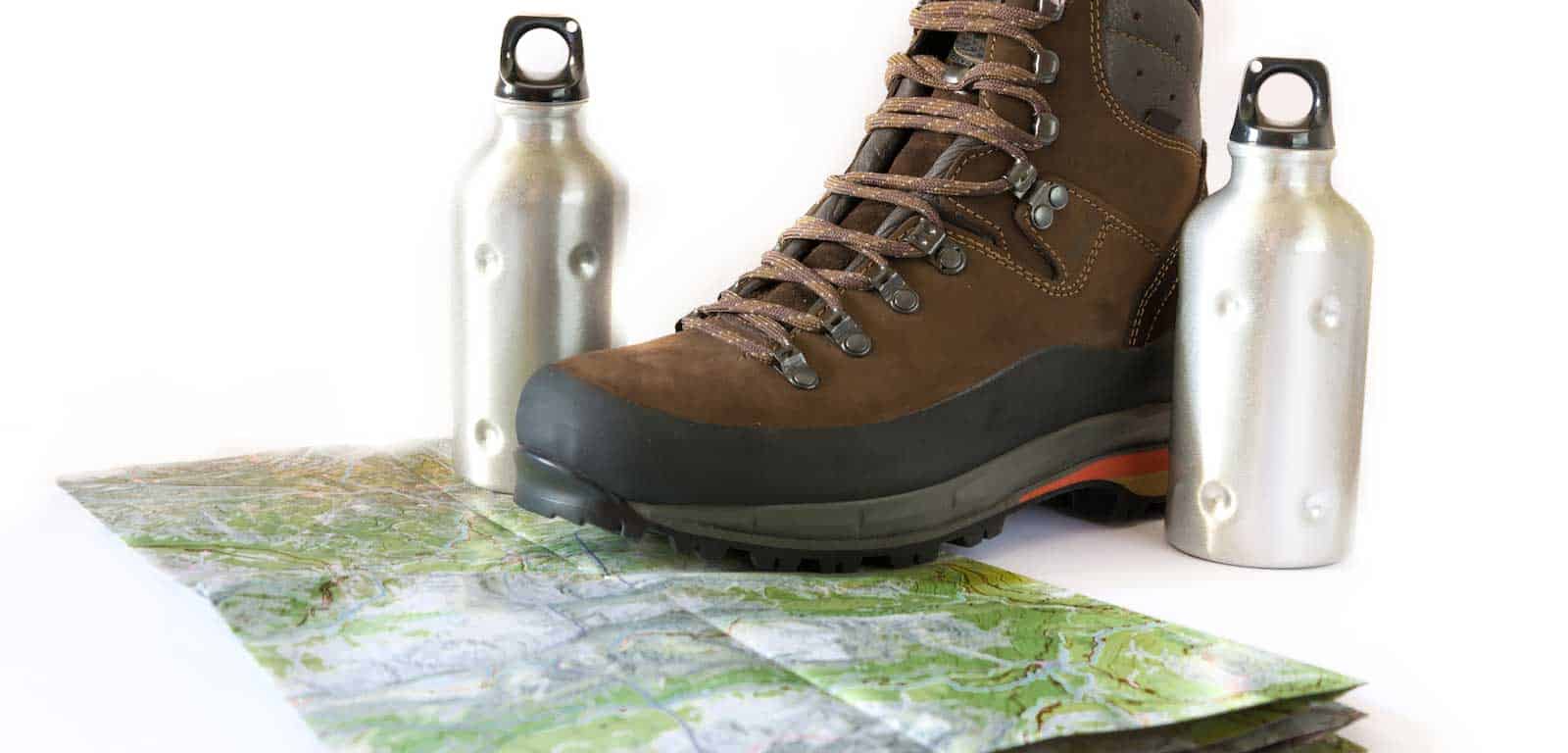

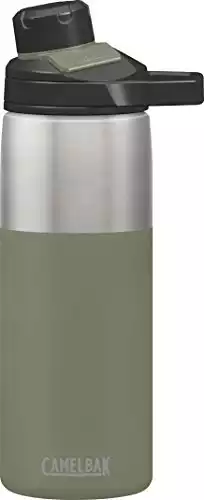
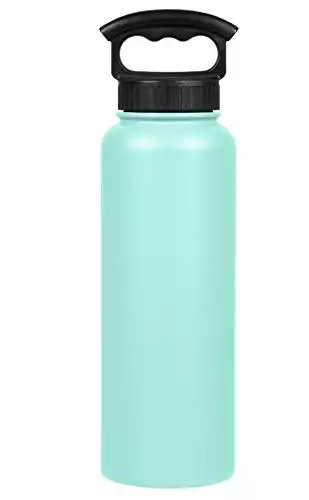
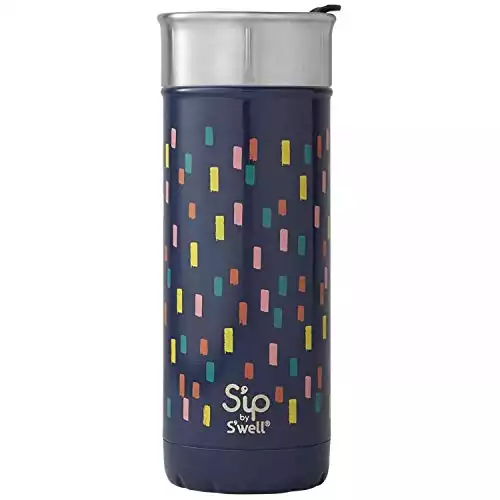
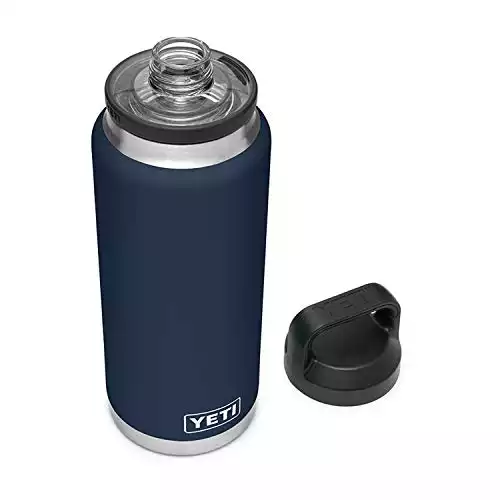
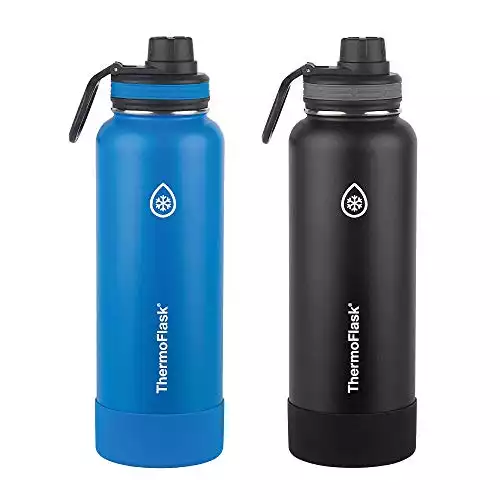
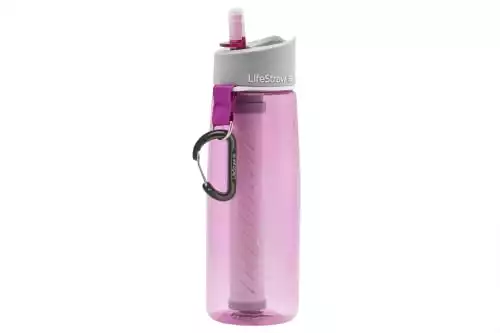
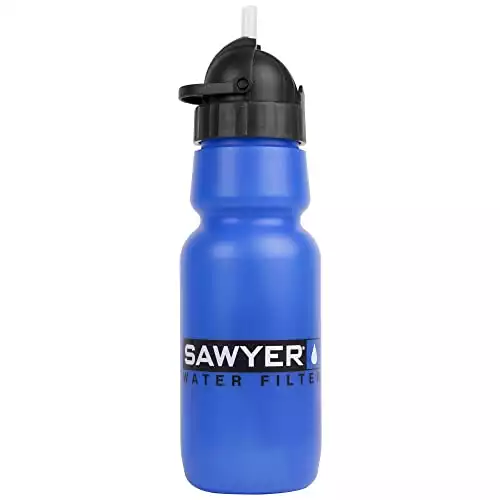
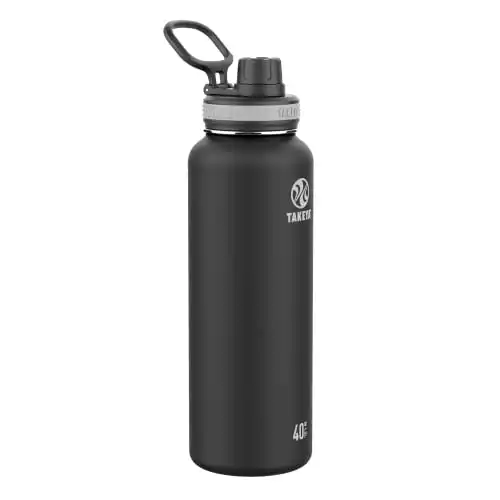
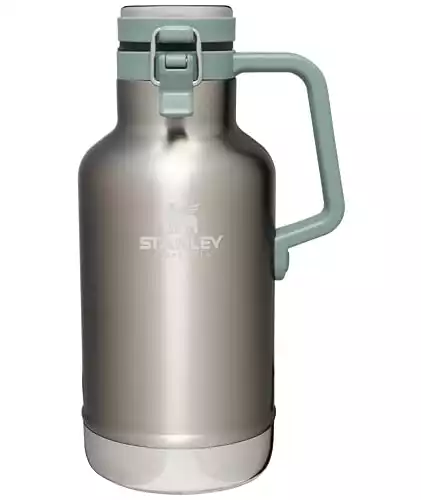
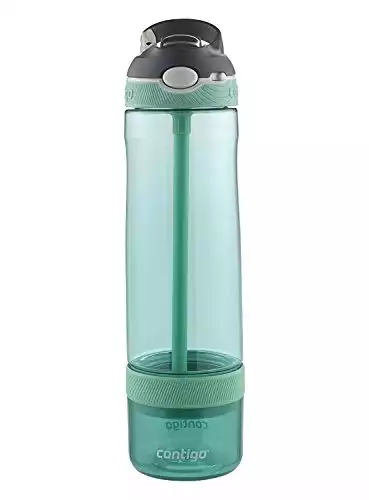
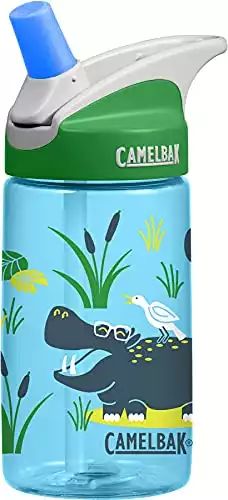
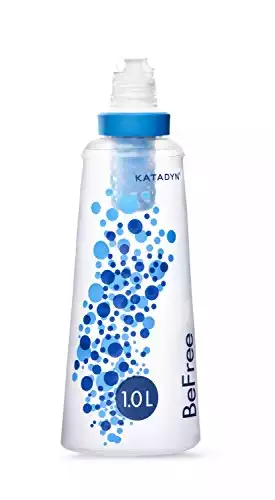


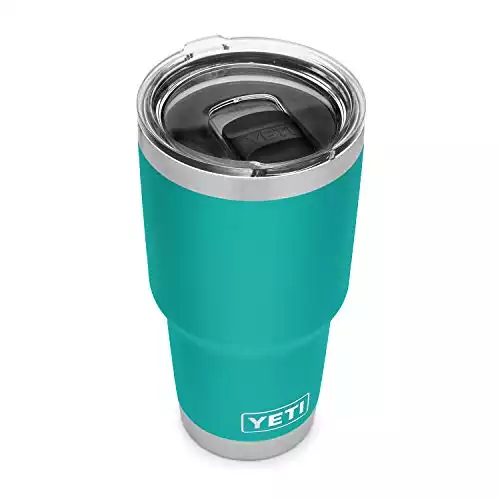
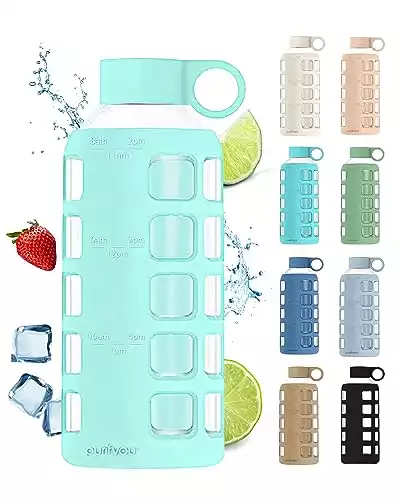

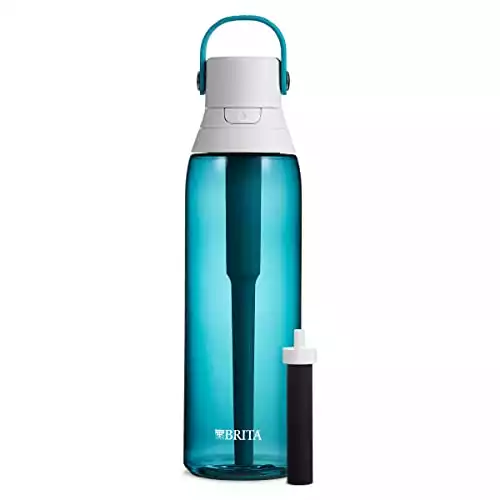
![GRAYL Ultralight Water Purifier [+ Filter] Bottle (Coyote Amber)](https://www.caminoadventures.com/wp-content/uploads/2023/09/31x9Z6GeklL._SL500_.webp)
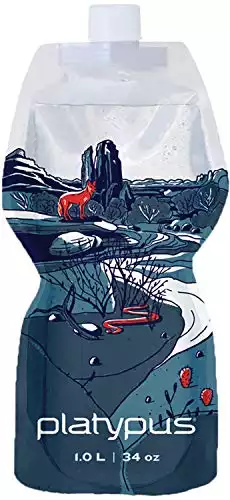
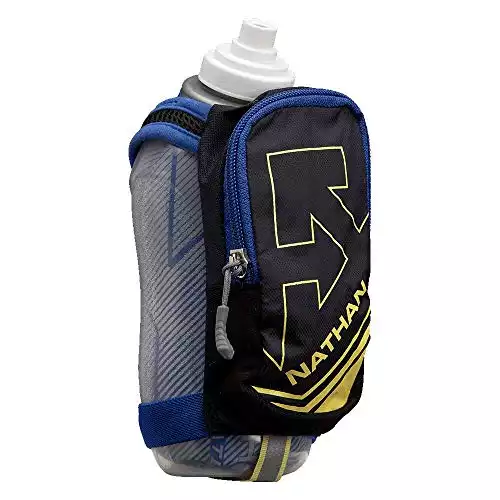
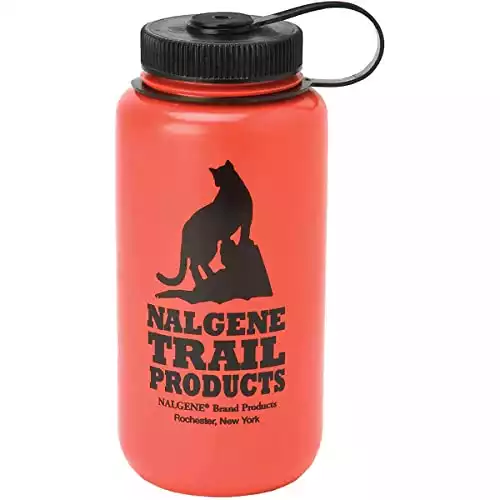
Having used canteens, reservoirs, throw away bottles and soft sided containers, those that collapse or fold in use are the better option when reusable. A hard side container keeps it shape – empty or full, keeping it’s bulk as an issue with little option. And in the difficult circumstance of falling on it, can actually create injuries. The collapsible versions take up less space as they are consumed and also in storage, too. Most packs these day have fast access to a bladder and exterior dedicated pockets making it easier to access them for use and refills. There is also the expense factor – there are cheap stainless bottles but they tend to be problematic with sealing, the expensive ones are more for social status than use. It’s just a reusable container and some frugality in chosing it will allow budgeting for other gear than needs to work right the first time.
Having hiked in August weather under the clock, one bottle isn’t enough – in fact the days activities may require two gallons. Plan accordingly as not all of it is consumed – cleaning cookwear and the hiker has to be included.